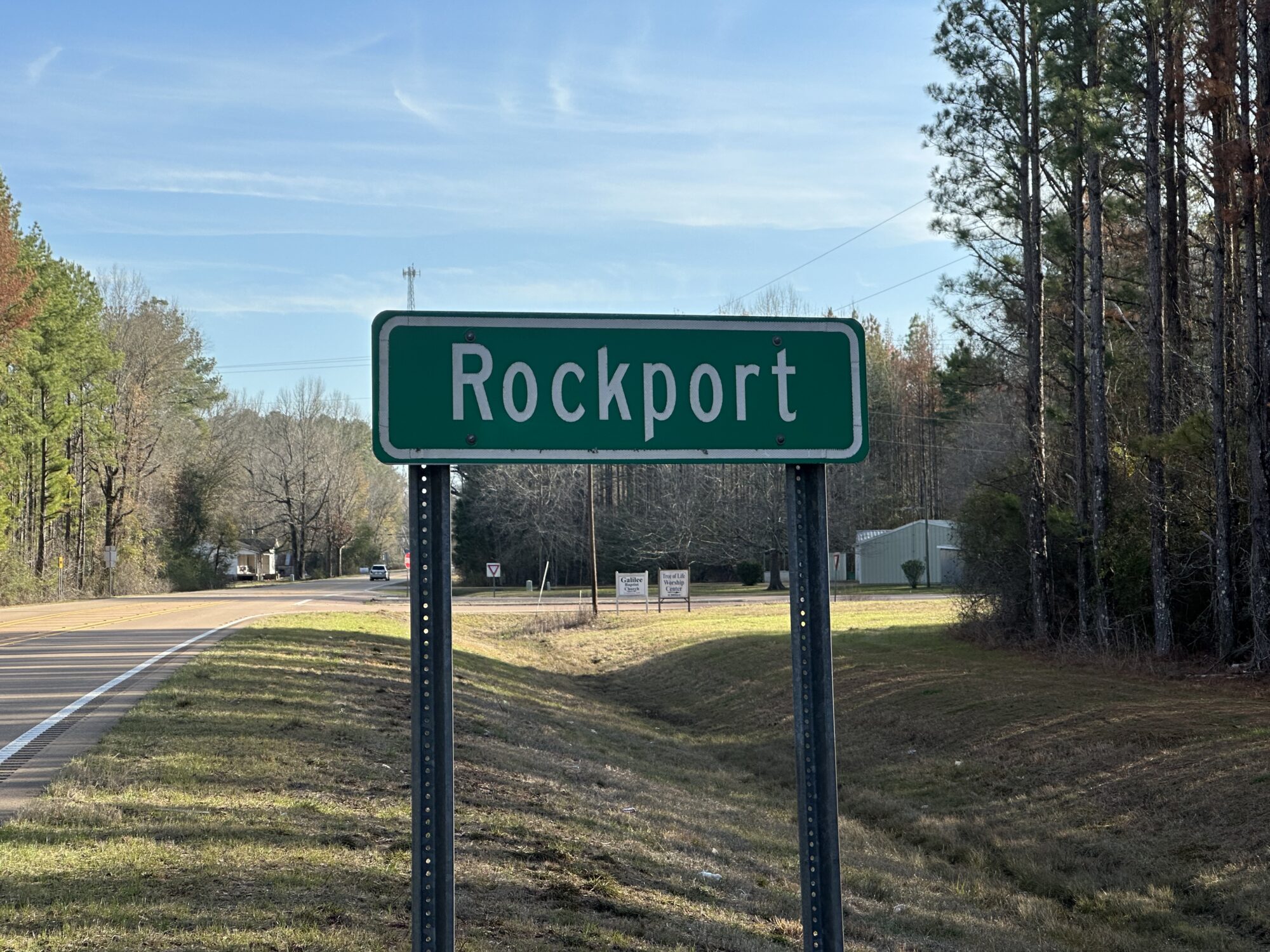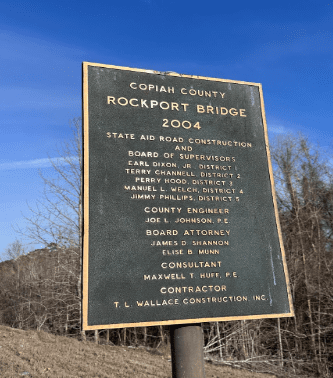
The life of Rockport, Mississippi sprung up quickly and fizzled out at almost the same rate, with nothing preserved.
“You’re from where?”
It is probably one of the more common follow-up questions if you’re from a little-known small town in Mississippi, and it’s one that folks in Rockport are asked all too often. To be fair, there are very few people living in Rockport, none of whom have a Rockport address, as the area has long been absorbed as part of Hazlehurst.
So, where is Rockport?
It’s a “blink-and-you-miss-it” community in Copiah County, just over five miles south of Georgetown on Highway 27. That’s the formal answer. The answers you’re most likely to get are “just out of Georgetown” or “in between Georgetown and Monticello,” always accompanied by the proud boast “right up on the Pearl River.”
There’s no grand “Welcome to Rockport” sign. There are two highway signs barely a mile apart, one facing the north, the other facing the south. Just a single word, white block letters on a green sign. ROCKPORT. It’s one of those signs you’ll barely notice unless, of course, you travel through frequently. Even then, you’re surprised the sign is still there– until you remember that the one boy who used to steal them finally grew up and got too busy to keep up with his highway sign thievery.
What happens in Rockport? Nothing.
People leave to go to work, and they come home. They hunt on the weekends if they aren’t working. On Sundays, folks of Rockport attend church at the only church in Rockport or drive elsewhere. In the spring, they batten down the hatches to see if the Pearl River will flood high enough to cause any real problems, and in the summer, they tend to gardens and cattle.
The biggest headline to come out of Rockport in the last two decades was the collapse of the Old Rockport Bridge in the early 2000s when a big 18-wheeler ignored all signs about the decrepit bridge and ended up in the river below.
That stretch of highway used to be booming, thanks to the New Orleans, Jackson, and Great Northern railroad that once ran through there. The life of Rockport sprung up quickly and fizzled out at almost the same rate, with nothing preserved.
Rockport was established in 1849. The railway, which was set to connect Canton, Mississippi, to New Orleans, was finished just prior to the Civil War. The railroad was abandoned. During the railroad boom of Rockport, there was a hotel, a Masonic Lodge, a store, and a church. Galilee Baptist church still stands today and is one of the only original markings of Rockport still standing.

Hidden deep in the woods, on private property, still stands a glimpse of how grand the New Orleans, Jackson, and Great Northern Railroad was.
The old railroad bridge still stands. Local boys would head out there and cross the bridge as recently as 2009, but it became impassible by foot after years of weather slowly erased the beams. Railroad spikes are often found nestled in the fallen leaves or in the gently flowing waters of the creek fed by the Pearl River.
It isn’t easy to get to the railroad bridge. First of all, you’re only getting so far in a vehicle unless you’ve got an ATV. Even then, it’s private property, often used in the winter as hunting grounds. On foot, it’s at least a 20-minute walk, and that’s if you’re not trudging through mud and having to cut away newly fallen trees and limbs from the latest storm.
But, for the adventurous, walking to the bridge is the way to go. As leaves and gravel crunch beneath your feet, in rhythm with your pace, you can almost hear the chugging of old train wheels. It’s hard to imagine that a train ever passed through there at all until you look down into the valley below the tracks, where old bottles and railroad metal can be found.
The advantage of this railroad was its connectivity during the Civil War. Travel was thought to have been easy, though the railroad was eventually ravaged in battle. Rockport even had its own band of Confederate soldiers. In 1861, a battalion of soldiers called The Rockport Steelblades was formed. They were part of Mississippi’s 6th infantry.
By the 1930s, Rockport was all but forgotten, with only the church, a store, a single antebellum home, and the abandoned railroad left. Then, there was no store for a while, until a family from Rockport moved back from Jackson.
Ira Head and his wife Cherry still live in Copiah County. Head’s parents operated the lone store in Rockport, Twin Pines, from the 70s until the early aughts.
“My parents, Everett and Dorris Head, ran the store,” said Ira. “And the whole family came together to build it.”
Head said that much of the store was built by hand.
“I remember being put at one end of the saw and being told, ‘Keep workin’ at it until the wood is in two pieces,’” Ira said.
Twin Pines had a little bit of everything.
“We had to have it all, being the only store,” said Ira. “Ice cream, tools, food, fried chicken,” Ira said with a laugh. “We had to have it all.”
The store was operational until Ira’s parents passed away within months of each other in the early 2000s.
Now, the closest store to Rockport would be the Dollar General in Georgetown. Head south down 27 from that Dollar General, and you’ll eventually hit Monticello, most likely without realizing that you’ve passed through Rockport along the way.
The next time you’re driving down the seemingly endless stretch of highway in Copiah County, take a moment to let your mind wander just behind the trees, to the old, abandoned railroad, and let it take you back to a once-thriving Rockport.











